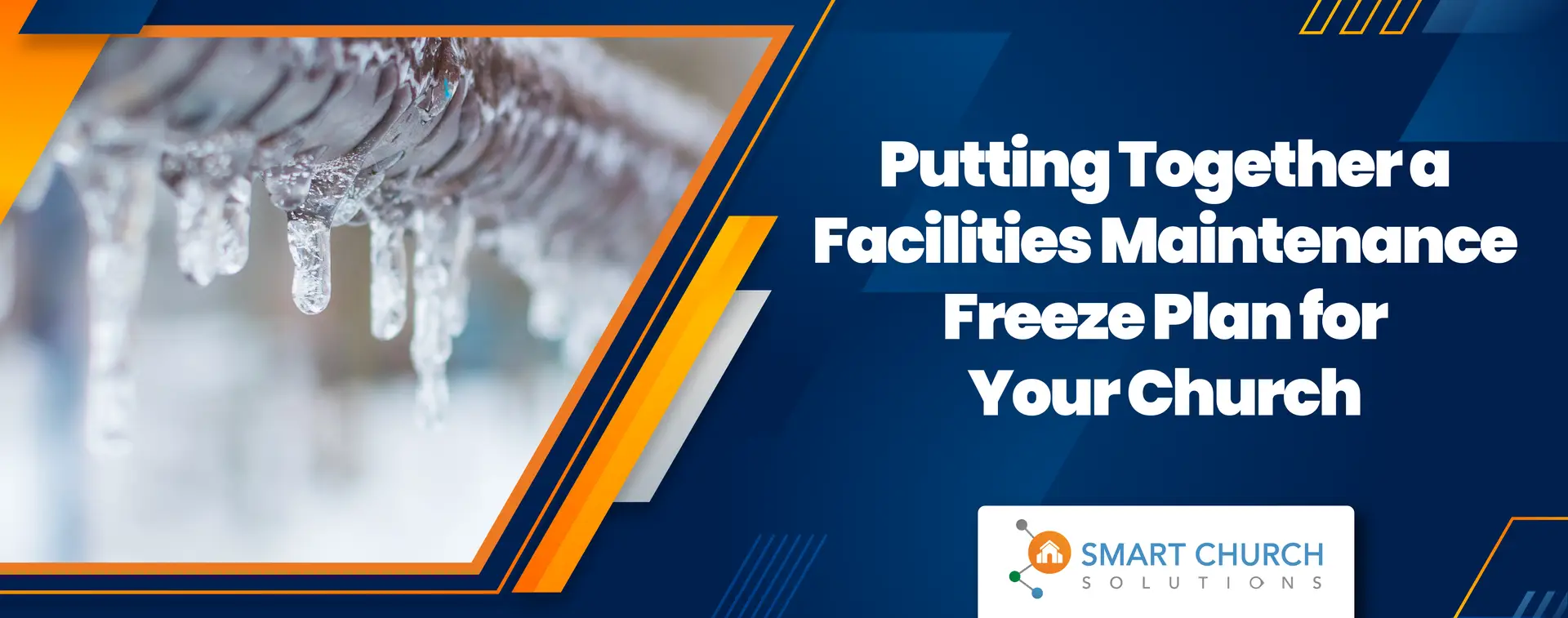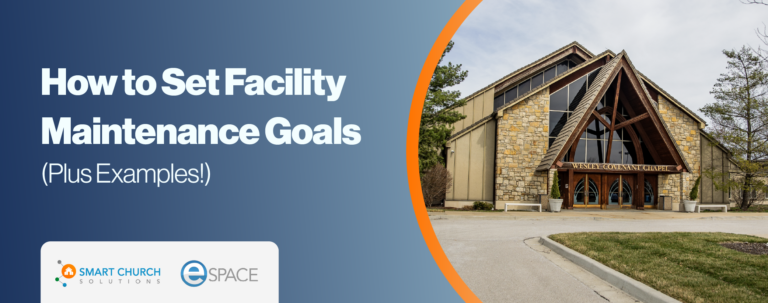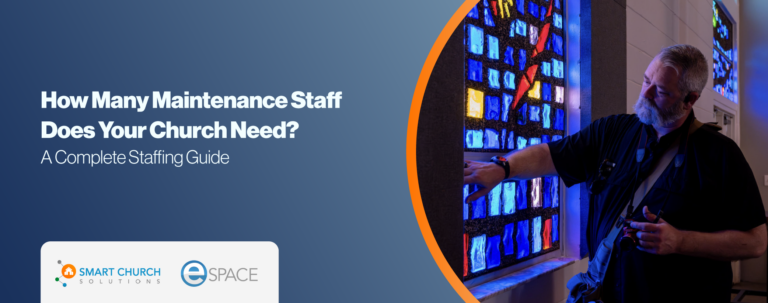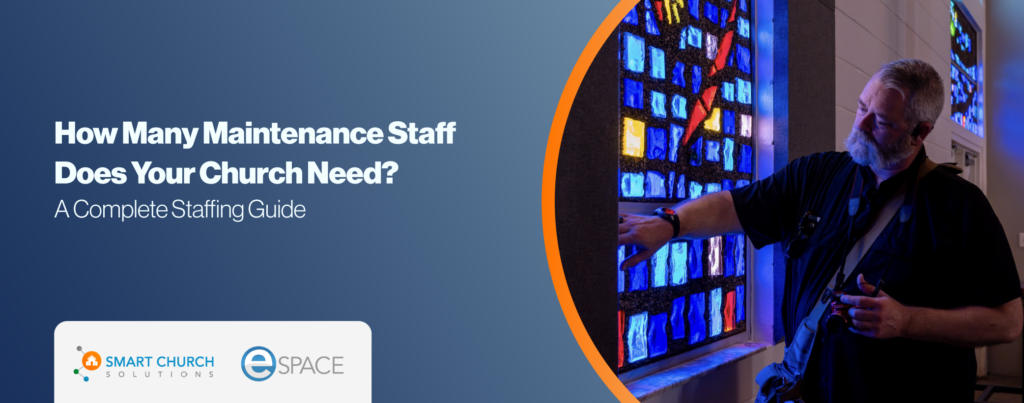As winter approaches, churches should prepare their facilities for the challenges of freezing temperatures. Cold weather can lead to costly issues, such as burst pipes, malfunctioning heating systems, and icy walkways. A comprehensive facilities maintenance freeze plan should be implemented to safeguard the church property and ensure that it remains functional, warm, and welcoming for congregants. This plan will help churches mitigate risks and avoid unexpected expenses during the colder months.
First, What is a Freeze Plan?
A freeze plan is a proactive strategy designed to protect facilities from the potential damage caused by freezing temperatures. It includes a series of preventive measures to ensure that systems such as plumbing, HVAC, and structural components can withstand extreme cold without malfunctioning or failing. These plans help avoid costly repairs and downtime by addressing weak points before the worst of the weather arrives.
10 Aspects of a Facilities Maintenance Freeze Plan
Below are several aspects to consider when creating a facilities maintenance freeze plan:
1. Objective
By identifying critical areas and implementing preventive measures, churches can avoid costly repairs and ensure continuous service during winter months.
- Primary Goal: Mitigate the risk of facility damage during extreme cold weather.
- Secondary Goal: Ensure safety and maintain essential operations, such as heating, lighting, and accessibility.
2. Scope
Clearly defining the scope ensures that no vulnerable area is overlooked, enabling targeted and effective actions.
- Buildings and Systems: Define which buildings, structures, and systems (e.g., plumbing, HVAC, electrical) are covered by the freeze plan. Include outdoor areas that may require de-icing or snow removal.
- Critical Areas: Focus on areas most susceptible to cold-related damage, such as uninsulated pipes, outdoor HVAC units, entryways, and poorly insulated building sections, like attics and crawl spaces.
3. Communication Plan
Effective communication prevents misunderstandings and ensures everyone involved understands their role in protecting the facility.
- Stakeholder Identification: Identify key groups—staff, maintenance teams, tenants, and congregants—that must be informed about the freeze plan.
- Communication Methods: Establish clear channels for sharing updates and procedures, such as email, physical notices, staff meetings, and signage throughout the facility.
- Message Content: Provide stakeholders with key details, including the reason for the freeze plan, the timeline for its implementation, and specific steps each group needs to take (i.e., setting thermostats or leaving faucets dripping).
4. Pre-Freeze Preparations
Ensuring the facility is well-insulated and that the heating system functions properly will prevent many common issues associated with freezing temperatures.
- Insulation and Sealing: Conduct a thorough inspection of the facility and upgrade insulation in vulnerable areas. Pay special attention to pipes in basements, attics, and crawl spaces, adding insulation or heat tape where necessary. Seal all cracks and gaps around doors, windows, and other potential entry points for cold air.
- Heating Systems: Before cold weather arrives, perform maintenance on all heating systems, including boilers, furnaces, and heat pumps. Regularly inspect air filters and replace them as needed to ensure proper airflow. Ensure that exterior heat pump equipment remains free of snow and ice buildup and has proper airflow.
Ensure your church is winter-ready. Regular maintenance is key to preventing cold-weather issues. Download the Church Preventive Maintenance Checklist: A comprehensive guide to keep your facility in top shape year-round.
5. Active Freeze Protocols
Monitoring and adjusting systems during freeze conditions will help mitigate damage and reduce emergency repair costs.
- Temperature Monitoring: Install sensors to monitor temperatures in key areas, especially where pipes or critical equipment are located. Set alerts to notify staff if temperatures drop below a certain threshold.
- Pipe Protection: During extreme cold, open faucets slightly to allow water to drip, reducing the risk of frozen pipes. Use heat tape and pipe insulation in high-risk areas to add additional protection.
- Heating: Keep a minimum temperature throughout the building to prevent freezing, even in less frequently used areas. Ensure backup power sources, such as generators, are operational to prevent heating failures during power outages.
6. Safety and Compliance
Safety is a priority during cold weather, so ensuring clear emergency paths and functional safety systems is critical.
- Emergency Exits and Equipment: Clear all emergency exits, pathways, and entrances of ice and snow to ensure safe passage. Regularly inspect fire extinguishers, alarms, and other safety equipment to ensure compliance with safety regulations.
- Compliance: Adhere to all relevant local, state, and federal safety and building codes. Regular audits will help ensure your church remains compliant even during extreme weather events.
7. Essential Services and Emergency Protocols
Quick action in emergencies minimizes damage and helps maintain critical services, reducing downtime for the church.
- Emergency Repairs: Establish a clear protocol for rapid response to weather-related damages. This should include a chain of command and a clear process for contacting emergency repair services, such as plumbers or HVAC technicians.
- Contact Information: Maintain an up-to-date list of emergency contacts, including local repair contractors and utility providers. Ensure that key personnel can be reached 24/7 during extreme weather events.
8. Resource Allocation
Properly allocating resources ensures preparedness and responsiveness during cold weather events.
- Staffing: Assign specific roles to staff members for monitoring vulnerable areas, responding to emergencies, and maintaining communication with external contractors.
- Budgeting: Allocate sufficient funds for purchasing insulation, heat tape, generators, and other cold-weather supplies, as well as for emergency repairs. Setting aside an annual budget for these expenses will reduce financial strain when unexpected issues arise.
“In my experience, part of my plan is to ensure that pre-freeze preparations are underway for walkways, driveways, and parking lots. This entails an adequate supply of ice melt to be spread by the facilities team, strategically placed snow shovels around the facility near major entry points, full gas tank in the plow truck and snow blowers, and discussion of plans with snow plowing or ice melt application vendors.” – Patrick Hart, Facilities Stewardship Specialist
9. Monitoring and Review
Consistent monitoring and gathering feedback allow for real-time adjustments and long-term improvements to the freeze plan.
- Regular Inspections: Conduct frequent walkthroughs of the facility, especially during cold weather. Check for any signs of leaks, ice build-up, or structural damage.
- Feedback Loop: Encourage staff and tenants to report any issues immediately. After each cold-weather event, gather feedback from stakeholders to identify areas for improvement in the plan.
10. Post-Freeze Actions
By conducting post-freeze reviews, churches can continuously refine their plans and ensure better outcomes with each cold season.
- Assessment: After cold weather passes, inspect all parts of the facility for damage. Focus on areas known to be vulnerable, such as pipes, HVAC systems, and roofs.
- Repairs: Address any damage immediately to prevent issues from worsening. Use this time to reassess the effectiveness of insulation, sealing, and heating protocols.
- Review and Improve: Evaluate the freeze plan’s performance. Note any lessons learned and implement changes to improve future cold weather preparedness.
Preparing your church for winter is a big task—what if some of it could be automated? With eSPACE, you can streamline tasks like monitoring temperatures and managing heating systems. 📞Book a free call to discover how automation can help your church stay on top of maintenance.
11. Connect with Your Insurance Carrier
Before cold weather sets in, reach out to your insurance carrier to clarify your policy coverage and obtain any checklists or guidelines they recommend for winter preparedness. Demonstrating proactive measures can be beneficial if you need to file a claim later. In the event of an emergency, promptly contact your insurer and document all details of the incident. This documentation not only aids in claims processing but also serves as a record of your due diligence in managing facility risks.
Freeze Plan Implementation Steps
Implementing a facilities maintenance freeze plan requires careful planning, communication, and execution. Each phase is designed to prepare the facility for extreme cold, monitor conditions during the freeze, and assess the plan’s effectiveness afterward. By following a structured approach, churches can ensure their buildings are safeguarded against the harsh effects of winter weather.
Below is a breakdown of the key implementation phases, providing clear steps to take before, during, and after the cold season.
- Planning Phase
- Form a committee to develop and oversee the cold weather freeze plan.
- Conduct risk assessments to identify potential vulnerabilities.
- Pre-Freeze Phase
- Prepare facilities by insulating pipes, sealing openings, and ensuring operational heating systems.
- Communicate the plan to all stakeholders and provide training if necessary.
- Active Freeze Phase
- Implement the freeze protocols as outlined, including monitoring temperatures and protecting pipes.
- Maintain regular communication with all stakeholders.
- Post-Freeze Phase
- Once temperatures rise, conduct a thorough inspection and assessment of all facilities.
- Repair any damage and review the plan to identify areas for improvement.
Preparing Your Church for Winter
Implementing a comprehensive facilities maintenance freeze plan is essential for churches to protect their properties and ensure the safety of their congregants during the winter months. From insulating pipes to ensuring heating systems are in optimal condition, each step in the plan plays a critical role in maintaining operations and avoiding costly damage. With thorough planning and regular reviews, churches can continue to serve their communities safely and effectively, no matter how severe the cold weather becomes.






